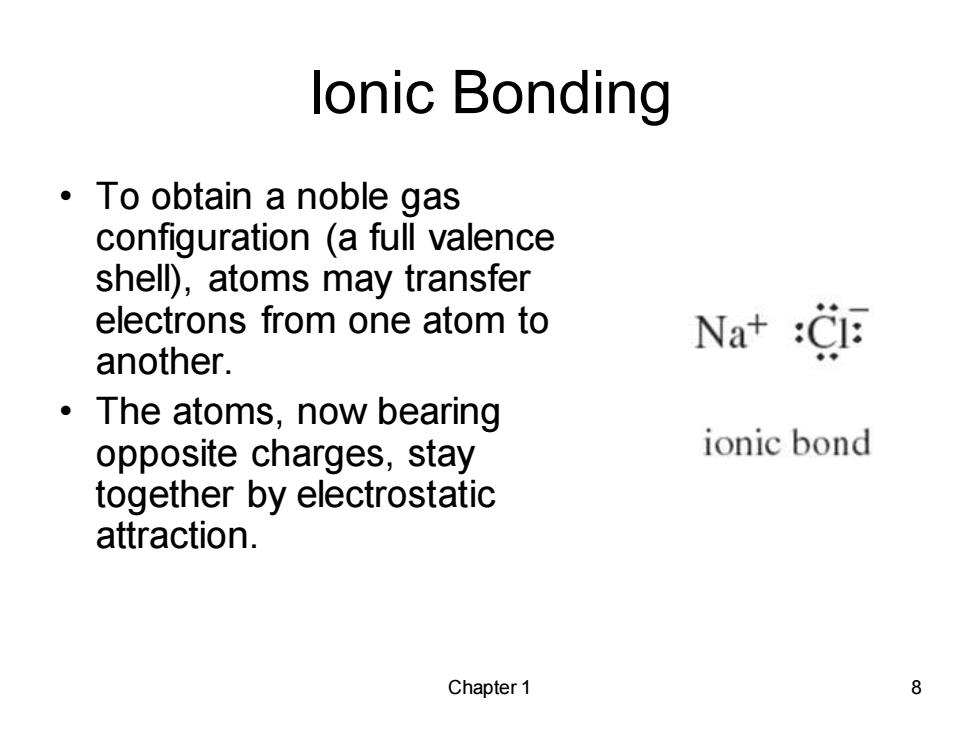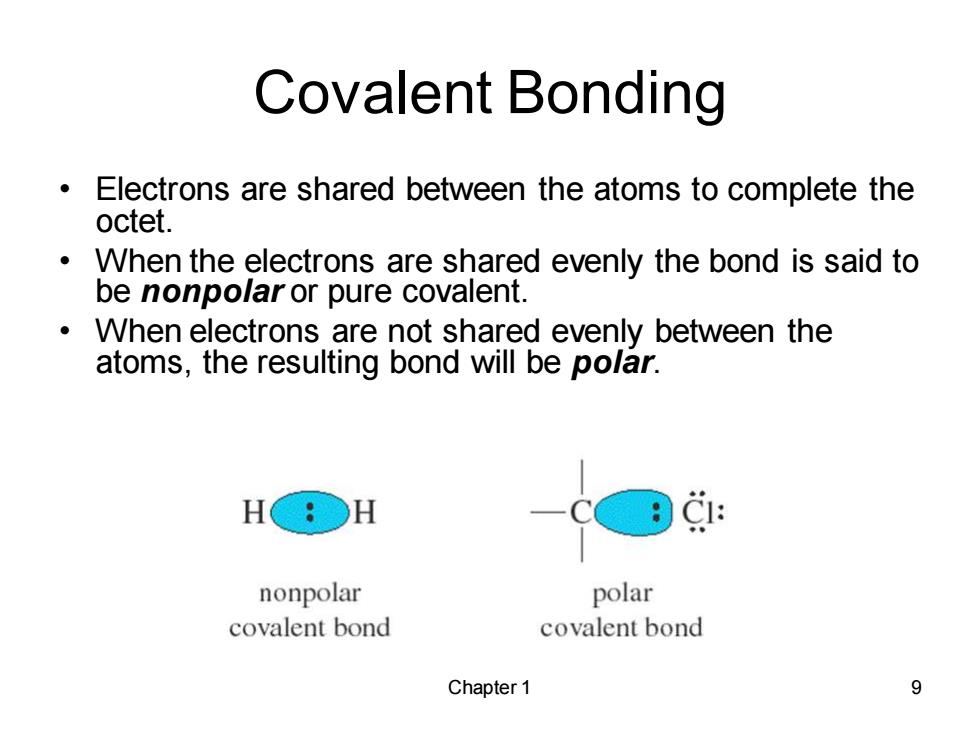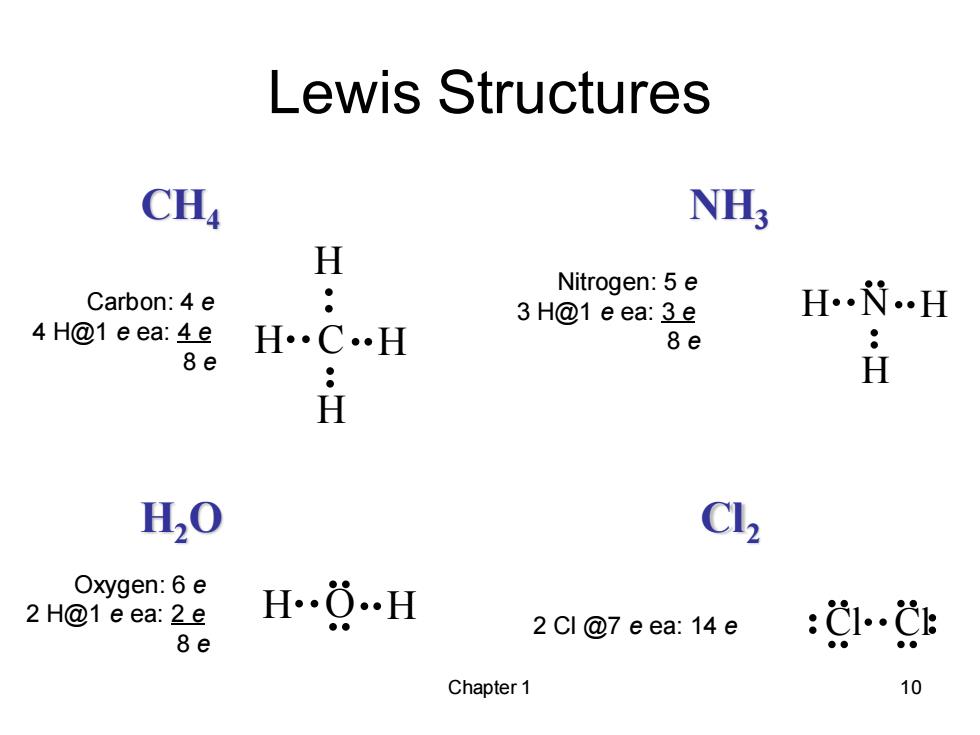
Electronic Configurations of Atoms Valence electrons are electrons on the outermost shell of the atom. TABLE 1-1 Electronic Configurations of the Elements of the First and Second Rows Element Configuration Valence Electrons H l 1 He 1s2 2 Li 1s22J 1 Be 1s222 2 B 1s22s22p 3 C 1s2222p2py 4 N 1s2222p2p2p 5 0 1s22s22p22p2p 6 1s22s22p22p32p Ne 1s22s22p22p2p 8 Copyright 2010 Pearson Prentice Hall,Inc. Chapter 1 6
Chapter 1 6 Electronic Configurations of Atoms • Valence electrons are electrons on the outermost shell of the atom

Electronic Configurations The aufbau principle Relative orbital energies states to fill the lowest 12px 12p -2p. energy orbitals first. Hund's rule states that energy when there are two or more orbitals of the same energy 1s (degenerate),electrons will go into different orbitals Electronic configuration of carbon rather than pairing up in the same orbital. Chapter 1 7
Chapter 1 7 Electronic Configurations • The aufbau principle states to fill the lowest energy orbitals first. • Hund’s rule states that when there are two or more orbitals of the same energy (degenerate), electrons will go into different orbitals rather than pairing up in the same orbital. Electronic configuration of carbon

lonic Bonding ·To obtain a noble gas configuration (a full valence shell),atoms may transfer electrons from one atom to Na+:CI another. The atoms,now bearing opposite charges,stay ionic bond together by electrostatic attraction. Chapter 1 8
Chapter 1 8 Ionic Bonding • To obtain a noble gas configuration (a full valence shell), atoms may transfer electrons from one atom to another. • The atoms, now bearing opposite charges, stay together by electrostatic attraction

Covalent Bonding Electrons are shared between the atoms to complete the octet. When the electrons are shared evenly the bond is said to be nonpolar or pure covalent. When electrons are not shared evenly between the atoms,the resulting bond will be polar. H&○H C1: nonpolar polar covalent bond covalent bond Chapter 1 9
Chapter 1 9 Covalent Bonding • Electrons are shared between the atoms to complete the octet. • When the electrons are shared evenly the bond is said to be nonpolar or pure covalent. • When electrons are not shared evenly between the atoms, the resulting bond will be polar

Lewis Structures CH4 NH; H Carbon:4 e ● Nitrogen:5 e 3 H@1 eea:3e H H 4H@1 eea:4e H 8e 8e H H H20 Cl2 Oxygen:6 e 2 H@1 e ea:2e HO…H 2 Cl @7 e ea:14e 8e :g…g Chapter 1 10
Chapter 1 10 CH4 NH3 H2O Cl2 Lewis Structures C H H H H N H H H H O H Cl Cl Carbon: 4 e 4 H@1 e ea: 4 e 8 e Nitrogen: 5 e 3 H@1 e ea: 3 e 8 e Oxygen: 6 e 2 H@1 e ea: 2 e 8 e 2 Cl @7 e ea: 14 e